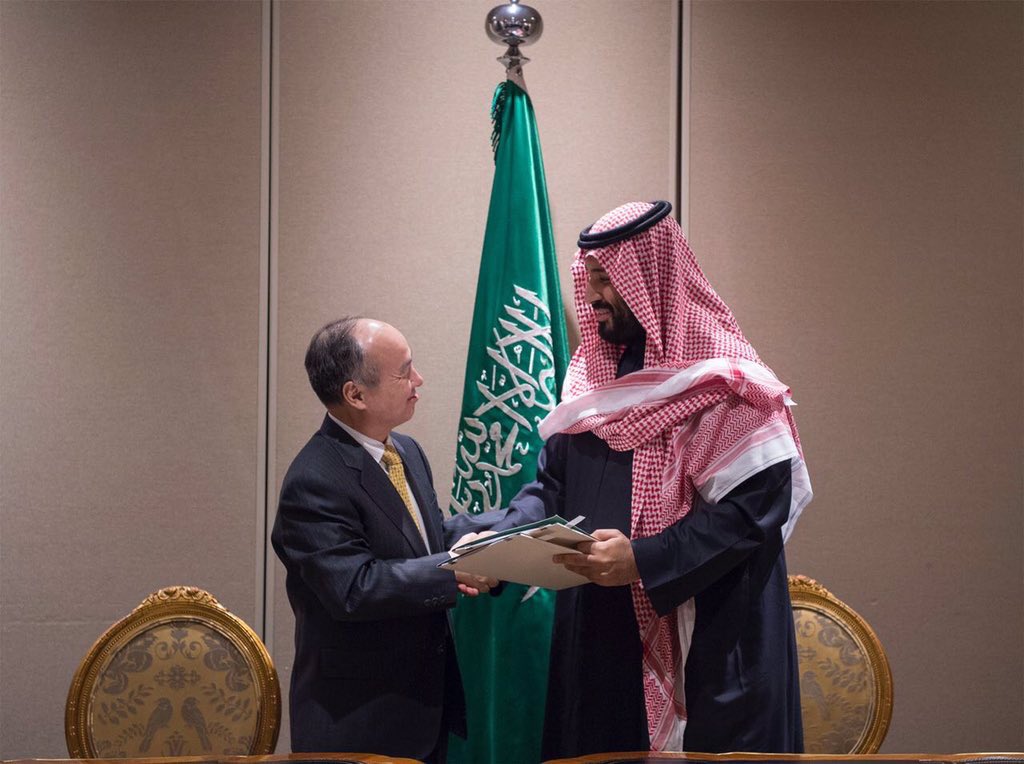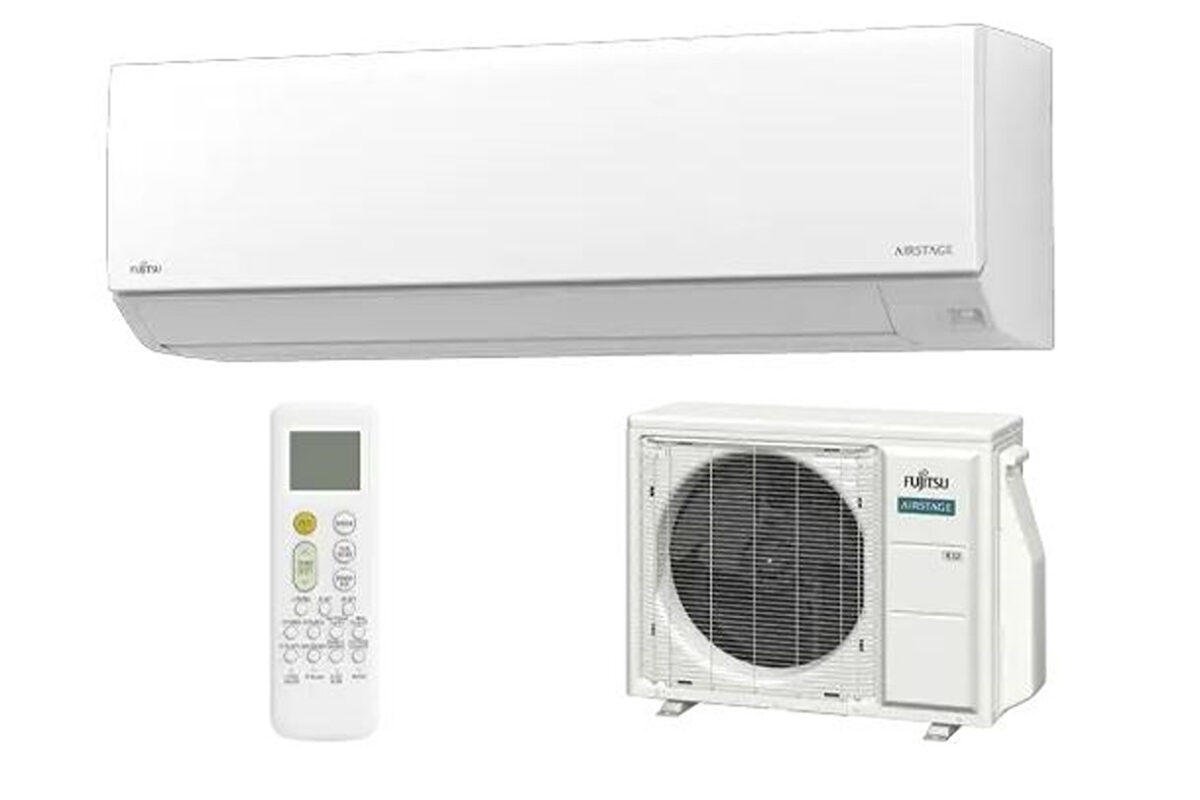Prince Mohammed bin Salman bin Abdul Aziz, Crown Prince and Deputy Prime Minister and Minister of Defense, met in New York, the U.S., yesterday with the founder and executive director of Softbank Group Corp., Masa San.
According to the official Twitter account of the Ministry of Foreign Affairs of the Kingdom of Saudi Arabia, the two parties signed an MOU to build the world’s largest solar PV project by 2030.
Bloomberg further reports that up to US$200 billion could be invested in the 200 GW project which, if realized, would be 100 times bigger than any other planned PV project – the announced 2 GW Solar Choice Bulli Creek PV Plant in Australia and the permited 2 GW Helios PV Plant Phase 1 in Greece – and a third more than what the entire PV industry produced, globally, in 2017.
At a briefing in New York, SoftBank’s Son said the project would also encompass equipment manufacturing and battery storage, with the potential for up to 100,000 jobs to be created and $40 billion in power cost savings.
2030 vision
SoftBank intends to invest the funds via its Vision Fund – the largest technology investment fund, ever, and which has backing from Saudi Arabia and the UAE; and companies including Apple, Sharp and Foxconn.
Last November, Bloomberg reported that SoftBank would invest up to $25 billion in Saudi Arabia's NOEM plan, a $500 billion mega city on the Red Sea coast. Its Vision fund, meanwhile, plans to invest $100 billion in Saudi Arabian nationally-owned utility companies.
According to Bloomberg New Energy Finance (BNEF) the project would almost triple Saudi Arabia’s electricity generation capacity, which was 77 GW in 2016.
Meanwhile, in 2016, the Crown Prince unveiled a Vision 2030 strategy to help reduce Saudi’s dependence on oil and create new job opportunities. “Our country is rich in its natural resources. We are not dependent solely on oil for our energy needs … But our real wealth lies in the ambition of our people and the potential of our younger generation,” writes Mohammad bin Salman bin Abdulaziz Al-Saud, chairman of the Council of Economic and Development Affairs on the Vision 2030 website.
Key move
Commenting on the news, Aymen Grira, a PV expert active in the MENA region, tells pv magazine the announcement is a key achievement for the 2030 Vision strategy, a target of which is to attract major foreign investment to Saudi Arabia.
“Softbank has a clear ambition in KSA [Kingdom of Saudi Arabia], moving from an important foreign investor to a strategic key partner as they are the first one to join in their scale/size,” he says, adding, “This record announcement will support the creation of the solar industry in KSA as it will define a clear and serious pipeline of projects, a very critical missing element for many solar manufacturers (PV module, inverters, etc.) who were hesitating to invest in manufacturing facilities in the kingdom without a confirmed local demand.”
Meaningless?
Jenny Chase, head of solar analysis at BNEF, is slightly more cautious. “It's a memorandum of understanding, it doesn't really mean much. Saudi Arabia has a long history of announcing big numbers on a long timeframe, and these are usually subject to substantial revision,” she tells pv magazine.
“The first phase of 7.2 GW is the more interesting number to keep an eye on – big, but likely to happen in a timeframe we can foresee. That said, in principle Softbank has a huge appetite for making investments, and Saudi has growing energy demand – as also evidenced by its nuclear announcements of 16 reactors in the next 25 years.
“200 GW of solar would roughly cover total Saudi electricity demand in 2017. There seems no practical reason why this should not happen, especially as air conditioning demand in the country increases, and with battery backup. However, the details are likely to require extensive negotiation.”
Rishab Krishna Shrestha, analyst at GTM Research, adds, “Global PV capacity stands at around 400GW as of YE/2017. To build half of that in Saudi Arabia by 2030 is a very ambitious plan.” However, “without looking at a more detailed plan, it is difficult to comment on the achievability of the target.”
He went on to say that Saudi’s solar industry is still in the nascent stages, with around 35 MW of cumulative solar PV installed capacity as of the end of 2017. It is expected to add around 9 GW by 2022.
“Saudi has local content requirements (LCR) but the 30% LCR capex requirements in the previous solar tender could be met with module imports. In case of much higher LCR (>50%), it would require setting up a module manufacturing facility and would make it difficult to achieve the target,” continues Shrestha.
“The LCR requirement and potential addition of storage to solar, could also explain why the estimated cost of 200 billion USD for 200 GW or 1 USD/Watt is more than the current below a dollar per watt cost (using imported modules).
“Not all signed MOU projects get realized, but if the 200 GW were to be built by 2030, even with taking a conservative capacity factor of 20%, it would mean that the solar energy produced would be around 95% of the current Saudi’s electricity consumption. How the electricity generation is going to be used is something that needs to be well thought out.”
More for export
The question of how the electricity could be used is an interesting one. In a special report on the Geopolitics of Energy, published recently in the Economist, it says Middle Eastern oil producers currently see renewable energy as a way to increase the availability of domestic oil for export, rather than it being an existential threat to the industry.
Indeed, China has recently overtaken the U.S. as the world’s largest importer of oil; against this background, China, Russia and the Middle East are currently forging strong energy ties with one another, with “State companies from all three regions investing in each other’s assets.
Other potential customers could include Jordan, which still relies massively on energy imports to cover its demand, while Sudan, which has lowest electricity consumption per capita in sub-Saharan Africa, has currently only 2 GW of installed power generation capacity, and a population of almost 40 million.
Egypt is also struggling to meet its energy demand, as are Somalia, Ethiopia, Eritrea. Iraq and Syria could be further potential customers, due to their damaged energy infrastructures.
The solar energy could also be exported, although this would mean forging different energy relationships with neighboring countries, including better cross border co-ordination and modernized power grids.
“This project might confirm the ambition of the Kingdom to export electricity to its neighbor countries,” says Aymen Grira. “Investments related to grid development and interconnections will be consequently developed.”
Major barriers
This is an issue Andrea Mansoldo, principal consultant at Norwegian consultancy DNV GL Group also highlights to pv magazine. “At some point, the major barrier for the deployment of these large amount of RES will become the power grid,” he says.
“If in the early stages of the deployment, the amount can be transmitted by the existing infrastructure and absorbed by the current consumers, when increasing the amount to 200 GW, an appropriate transmission grid shall be designed; this shall embrace not only the internal energy delivery, but also possible interconnection capacity to export the excess of energy that such an amount could produce in particular hours of the day and period of the year.”
He continues, “Due to the variability of the solar yield, flexibility in planning and operating the system shall be addressed; depending on the location of the solar farms, it is possible that long transmission distances must be covered to transfer the RES power to customers or to export in other GCC [Gulf Cooperation Council] countries.
“In this context not only the conventional HVAC [high voltage, alternating current] but also the application of a more innovative HVDC [high-voltage, direct current] transmission technology could play an important role in achieving the 200 GW target.
“It can provide the flexibility and efficiency not only to perform RES internal power transfer to Saudi customers, but also exploiting export opportunity to other countries overcoming the technical issues related to the difference of the nominal Saudi frequency (60 instead of 50 Hz).”
The article was amended on March 29, 2018, to remove inaccurate information about Saudi's current energy mix. Apologies for the inaccuracy.
This content is protected by copyright and may not be reused. If you want to cooperate with us and would like to reuse some of our content, please contact: editors@pv-magazine.com.




Go ahead Saudi- after many years of announcements time to act.
200 GWp can be done in 4 years if chinese speed is realized. The huge Gigawattprojects in China have not been mentioned in the article.
Production capacity will reach 300 GWp/a in 2025 as markets do. So, no problem to supply that targets.
Solar is very cheap in Saudi already, so it`s time to do more.
I very seldom see people commenting on these articles but this is really an interesting target. BNEF is right to note that the first 7.2 GW phase will the important thing to watch. However, larger movements in the entire industry should be expected. If anything, the goal signals to existing manufacturers that their production planning is warranted or even needs to be expanded further.
What I don’t understand at all is why KSA has chosen a foreign bank as a project partner. Do they not anticipate having a large-enough cash flow to pay for the project nationally? Of course, it is always good to have foreign ‘investment’ coming in but if someone could explain their thoughts, I’d be grateful.
I do want note that there seems to be an inconsistency between this and the Bloomberg article. They write that, “About two thirds of that is generated by natural gas, with the rest coming from oil.” while PV Mag writes that, “Currently, it still relies on liquid petroleum for around 60% of its electricity generation.”
You are incredulous. The project is incredible.
Thanks James!
FYI, the information on the current grid mix of the KSA is still incorrect. According to IEA, it is supposed to be majority natural gas.
Hi Martin,
Thank you for pointing this out, and apologies for not responding sooner. The article has been amended!
Best, Becky